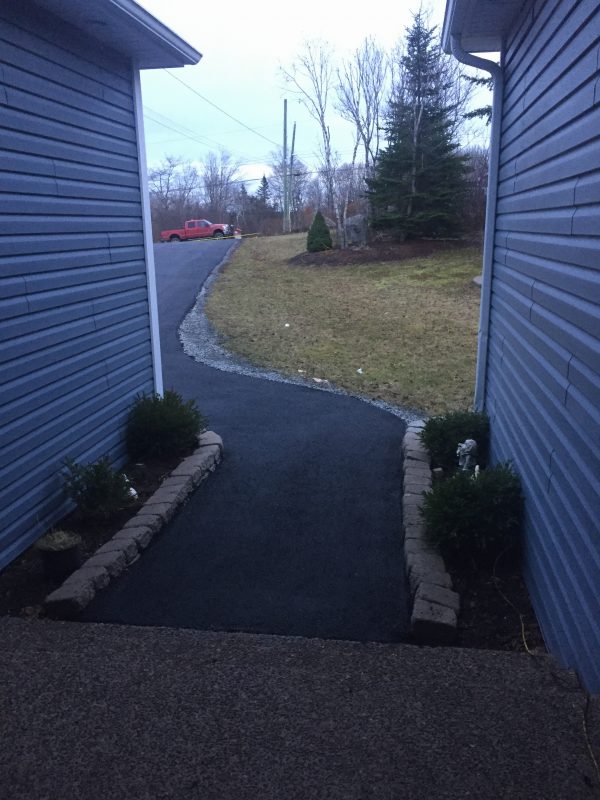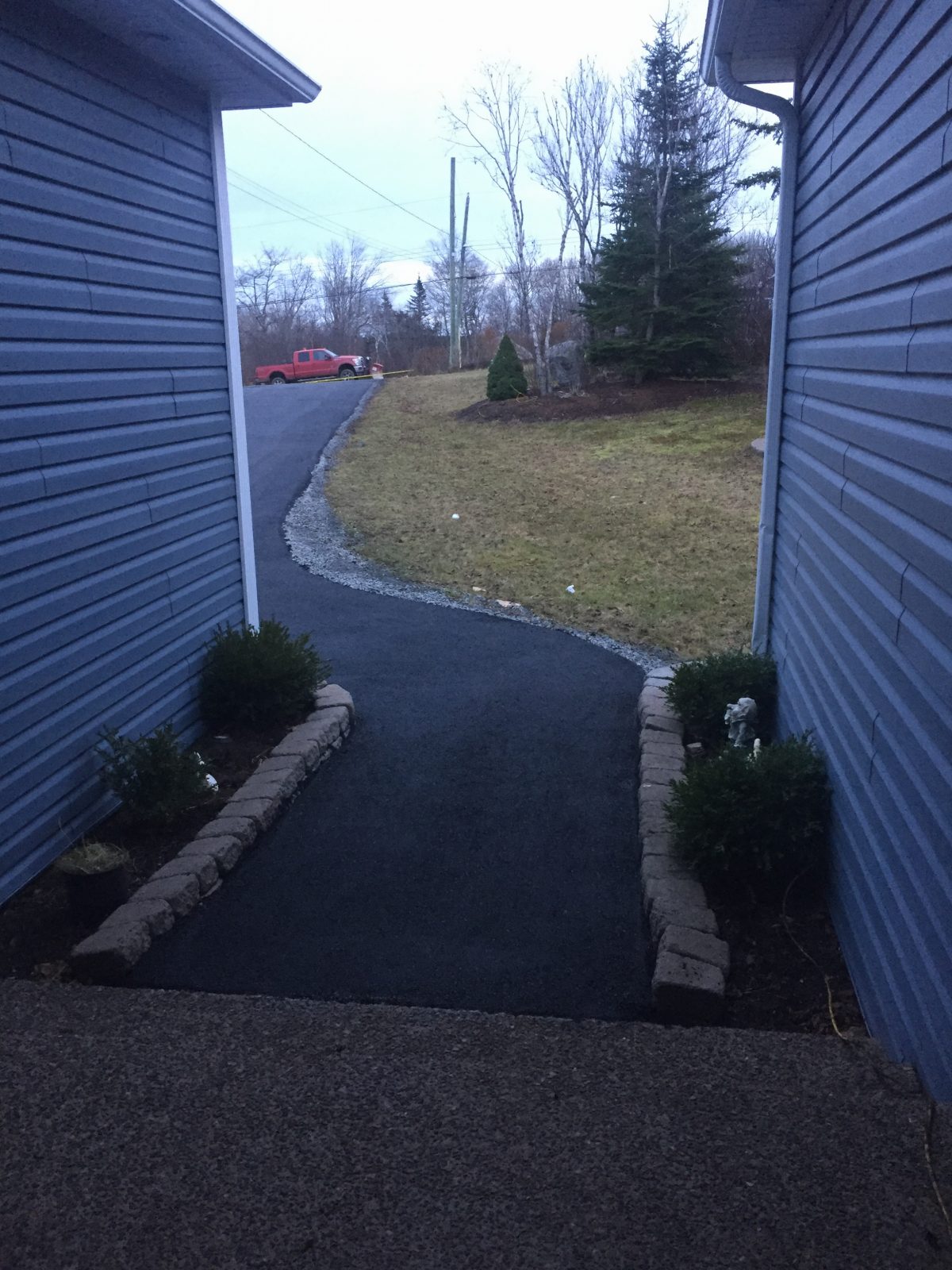The single most important factor that affects the long-term durability of
a hot-mix asphalt (HMA) pavement is the density of the mix that is achieved
by the contractor at the time of construction.
Air Void Content
Compaction of your new asphalt driveway is completed through use of rollers, plate tampers and the paver machine itself. Compaction is referring to the density of the new asphalt. Upon compaction the asphalt density is increased and the air void content is reduced. Properly installed pavement should have an air void content of 3-5%. 
Air Void Content of your asphalt driveway plays a major role in the following factors affecting your new pavement: fatigue life; permanent deformation; oxidation; moisture damage; distortion;
and disintegration.
Factor #1: Fatigue life is the number of repetitions of load that a pavement surface can sustain without failure. Decreasing air void content from 8% to 5% has been shown to double the fatigue life of a paved surface.
Factor #2: Permanent Deformation occurs when theres actually too much compaction applied or the compaction is applied too early. A contractor that makes the mistake of applying too much compaction while the pavement is too hot will find that the mix shoves or stress cracks under the weight of the roller. This causes permanent deformation of the mix. If this mistake is made the issue can be repaired while the pavement is still hot. Measuring the surface temperature is key to ensuring the right compaction is applied at the right time.
Factor #3: Oxidation. Oxidation is the process by which the light oils of the asphalt begin to breakdown. As these oils breakdown the pavement becomes more brittle and likely to crack. Decreasing air void content has been proven to reduce oxidation of asphalt driveways and parking lots.
Factor #4: Moisture damage. Water entering your driveway is going to wreak havoc on it, especially in our climate where freeze thaw cycles occur. Pavement with good compaction will not allow moisture to penetrate the surface greatly reducing moisture related damage.
Factor#5: Distortion and Disintegration. If you’ve ever seen a driveway with potholes or low spots where the cars have parked then you’ve seen this factor in play. Pavement with high air void content has room for added compaction. On a hot day the pavement can reach temperatures high enough to facilitate compaction. A heavy vehicle parked in the same spot is enough to cause the pavement to compact and leave a low spot or pothole. Reducing air void content will ensure the pavement is evenly compacted and that there is no room for further compaction to occur. This prevents the common problem of rutting and tire marks.
Pavement Compaction is Key
In Conclusion, Compaction is key to increasing the lifespan of your new pavement. The use of the right sized roller at the right time can increase compaction density and lower air void content. We use a large 3 ton roller for all our residential work and larger on some commercial projects. This is a suitable size for most residential and light commercial paving.

